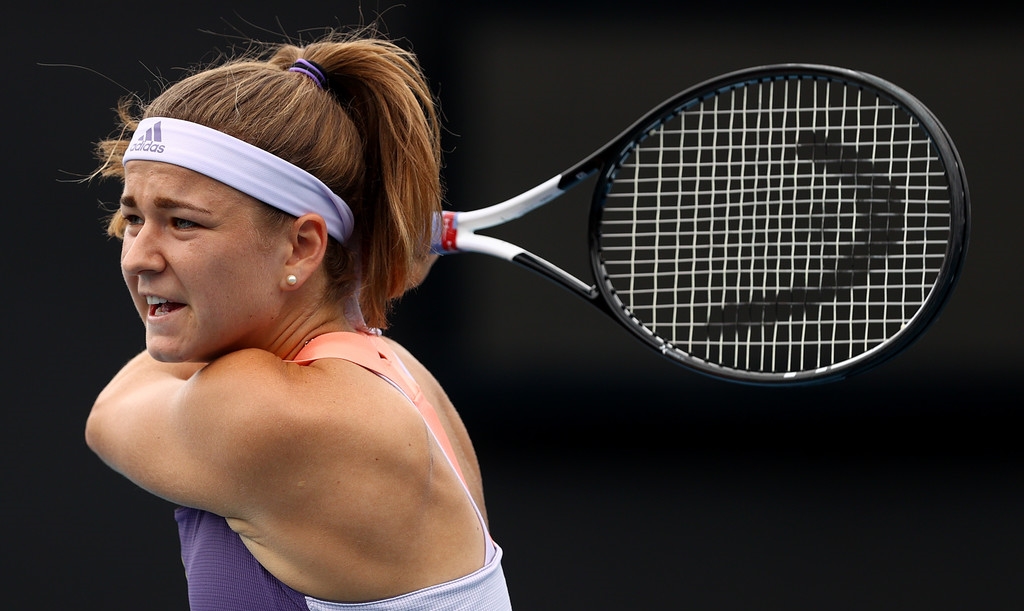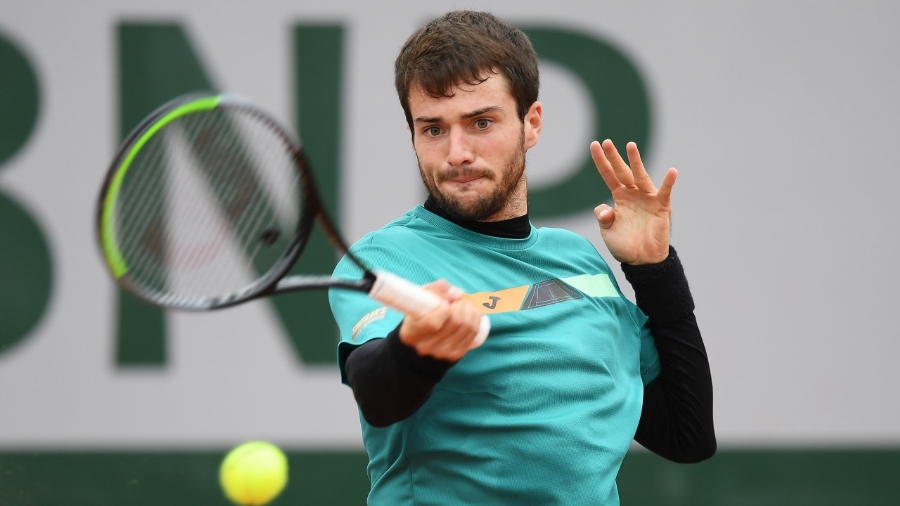Once in a while you come across a match where both players start with solid game plans and push each other in the early going, until the moment where one player takes over the match not because they suddenly begin producing first-rate shots, or not because the other player stumbles onto a bad patch of errors out of nowhere, but rather because intangibles slowly but surely begin to impose in favor of one over the other. Such was the case on Court 13 on Thursday, in 25th-seeded Karolina Muchova’s 6-4 6-1 take down of Mona Barthel in one hour and 13 minutes under windy conditions.
You will not find stats on categories like craftiness, versatility, confidence, perseverance, and athleticism. And yet, they were the central reasons why Muchova, having once grabbed the decisive lead in the first set, was able to sprint to victory without looking over her shoulder.

In fact, if one strictly looked at stroke production, Barthel was able to match Muchova’s skills for most of the first set. She began with clever tactics, going for her second serves in order to halt Muchova’s intention to attack on returns, taking cuts on returns herself to put Muchova on her backfoot early in the point, and using her down-the-line accelerations in rallies from both wings to keep Muchova from stepping inside the baseline, looking to cut off the cross-court strikes to rush the net (one of Muchova’s favorite patterns).
And then, there were the intangibles…
Example 1:
At 30-30 in the 1-1 game on her serve, Barthel served two second-serve aces to hold, thus challenging her opponent to reconsider her plan to park inside the baseline and unleash on second-serve returns. But this is where confidence and belief come into play (one of the above-mentioned intangibles) and Muchova was not intimidated one bit. She kept on pressing on returns, giving a message to Barthel that the German better keep taking risks on her second serves and consistently produce, or else. “Or else” happened and Barthel, feeling the pressure herself, committed double faults at the most inopportune times throughout the match.
Example 2:
At 2-2, 0-15 on Barthel’s serve, Muchova sneak-attacked the net on a sharp cross-court backhand and finished the point with an overhead on Barthel’s floater (intangibles: high on-court IQ, versatility, athleticism). She followed that up with a terrific return winner on the German’s first serve, proving again that she was not backing down on her return positioning (intangible: persistence).
Example 3:
At 3-3, Barthel trailed 0-30, but Muchova made two unforced forehand errors in the following points to allow Barthel back into the game. Did that hold her back? Nope. She accelerated her forehand again at 30-40, landing it on the baseline this time, and Barthel could not get it back into the court (intangibles: high on-court IQ, perseverance).
Barthel essentially found herself trailing 3-4 and down a break, without having played a bad match at all up to that point, and having committed less unforced errors than her opponent. That break proved conclusive, Muchova won the first set 6-4 on her fourth set point when Barthel missed a return deep.
Barthel tried to dial up on aggressive play in the second set, but Muchova managed to derail her plans when she began herself attacking the net relentlessly whenever Barthel stretched for the ball at the baseline. The Czech even mixed in a few serve-and-volley attempts with success. She finished the match with 15 point won at the net out of 21, several of them on overheads because she set the approach up so well that Barthel had no choice but to hit a lob just to allow herself time to recover back to the middle of the court. Executing her all-court game to perfection throughout the second set, Muchova put forth some first-rate tennis, forcing Barthel into more errors in the process.
Consider for example the 30-15 point on Muchova’s serve at 0-1 in the second set. In that point, Muchova nailed an inside out forehand and Barthel, expecting Muchova once again to rush the net behind it, went for a high-risk, low-probability down-the-line passing shot (or what she thought to be a passing shot) on her backhand, and missed it wide. But in reality, Muchova had not followed her forehand to the net. Barthel could have just hit a defensive shot back to the middle of the court and relaunch the rally. Except that Muchova had attacked so many times from that position prior to that point that Barthel, expecting Muchova to once again bring the heat, felt the necessity to come up with a winner to the line, and made the error as a result. This is one of the long-term benefits of the all-court game (read: versatility and craftiness) when it’s well executed. You collect points on the turmoil your game causes inside your opponent’s head (read: intangible).
I will give one last illustration of an intangible, in the form of clutch timing. Post-match stats indicate that Muchova hit one ace in the second set. They will not indicate, however, that it came at break point down when leading 4-1, conclusively shutting the curtains on the last ray of hope Barthel had in order to climb back into the match.
Muchova’s third-round opponent is her compatriot Karolina Pliskova, seeded 6th, in what promises to be a tasty encounter for tennis fans. They met at the Majors twice, both in 2019, with Pliskova winning in straight sets at the Australian Open, and Muchova prevailing in a thrilling three-setter at Wimbledon (13-11 in the final set). I am certainly looking forward to Saturday for the third go-round between these two.

